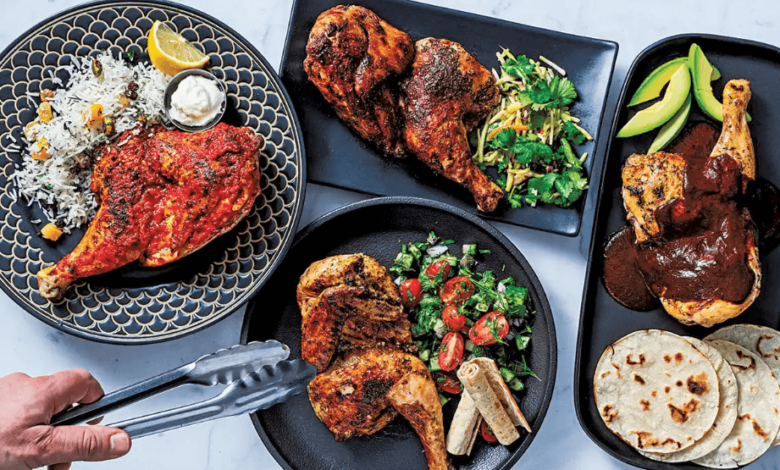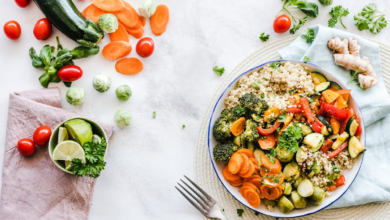Sous Vide Food for Restaurants: How to Save Time Without Sacrificing Quality

Restaurants don’t have time to waste. Not on training new cooks from scratch. Not on re-firing overcooked chicken. Not on explaining to a table why the salmon’s dry this time when it wasn’t last week. Sous vide food fixes a lot of that. Not through shortcuts – but by building control into the process from the start.
More restaurants are turning to sous vide because it solves three common problems: inconsistency, labor inefficiency, and waste. When done right, it also opens up the menu. Suddenly, you’re not limited by who’s on the line or how fast they can turn out a dish. You’re only limited by what’s in your cold storage.
Here’s what that looks like in practice.
Why Consistency Matters and How Sous Vide Handles It
Consistency isn’t optional anymore. If a guest orders the steak medium-rare, they expect it to come out medium-rare. Every time. Doesn’t matter if it’s Monday lunch or Saturday night. Doesn’t matter if the lead cook called out and you’ve got a backup on the grill.
Traditional cooking can’t guarantee that. Too many variables – pan heat, timing, distractions, fatigue. A few seconds too long and you’ve already gone past the ideal temp.
Sous vide removes that guesswork. Food is vacuum-sealed, then cooked in a precisely controlled water bath. You’re not hoping for the right internal temp. You’re setting it. And holding it there for as long as you need to. A 129°F filet comes out 129°F, edge to edge. Not 120 in the center and 145 near the edge. Just what you planned for.
It’s not just proteins either. Vegetables, eggs, desserts – if there’s a doneness target, sous vide can lock it in.
See also: Unlocking Wellness: The Essential Guide to Healthy Living Habits
Prepping Ahead Without Losing Quality
Kitchens run better when the prep is done before the pressure starts. That’s another area where sous vide helps.
With sous vide food, a restaurant can prep proteins for hours – or even days – ahead of time. You vacuum-seal the food, label it, cook it, and chill it. During service, it only takes a quick reheat and finish to get the plate ready.
This changes how service flows. You’re not scrambling to pan-sear eight chicken breasts while trying to avoid burning three others. The food is already cooked perfectly. All you need to do is warm it and finish the presentation. Less stress. Faster turns. Fewer mistakes.
And because you’re not overcooking or discarding batches, there’s less food waste. Shrinkage drops. Moisture stays inside the food, not in the pan. That adds up to better yield and lower costs over time.
Sous Vide Products for Chefs Who Want More Control and Flexibility
Some kitchens build their own sous vide program from scratch. They buy the immersion circulators. They train staff. They build workflows around it. That’s one way.
But for a lot of restaurants, it’s simpler to use sous vide products made offsite. Commercial sous vide suppliers offer fully cooked, vacuum-sealed proteins and sides that chefs can integrate into their menu without reinventing their kitchen process.
These sous vide products are precise, food-safe, and tested for repeat performance. That matters when you’re scaling menus or dealing with turnover on the line.
Let’s say you want to add duck breast to your dinner menu. You don’t need to train every cook to hit medium on duck. You can source pre-cooked duck breast, sous vide to spec, and finish it with a pan sear or glaze just before plating. Same goes for pork tenderloin, salmon, short ribs, you name it.
It’s not a replacement for good cooking. It’s a system that gives chefs more flexibility without compromising quality.
The Benefits of Sous Vide Food Extend Beyond the Plate
There’s a reason wholesale sous vide food is in use across fast-casual chains, hotels, airlines, and fine dining kitchens. It makes the operation more predictable.
- Labor: You don’t need a seasoned sous chef to execute the main proteins. New staff can step in with minimal training and still hit the mark. That’s huge when labor is tight or turnover is high.
- Speed: Service times drop. You’re not waiting 12 minutes to pan-sear and rest a steak. You’re reheating and searing in under five.
- Inventory control: Sous vide food holds longer in storage. Vacuum-sealed pouches in the walk-in stay usable longer than raw ingredients. That gives you more control over ordering, prepping, and responding to demand spikes.
All of this leads to fewer mistakes, faster training, and better cost management. Without giving up food quality.
Expand Your Menu Without Expanding Your Headaches
Restaurants get stuck with static menus when they don’t have the time or labor to test and support new items. Sous vide food helps get around that.
Want to offer two levels of doneness on steak without slowing down the kitchen? Sous vide makes that possible. Want to try a new pork dish without adding 15 minutes of prep time per shift? Use a pre-cooked option and see if it sells.
This is especially useful for multi-location operations that want consistency across kitchens. You can roll out new menu items regionally and still get consistent execution.
And it’s not just proteins. Sous vide eggs, vegetables, even desserts like crème brûlée can be batch-prepped, chilled, and served without sacrificing texture or taste.
Why Work with a Commercial Sous Vide Supplier?
Running a sous vide program internally takes gear, storage space, and constant monitoring for food safety. Not every restaurant is set up for that.
That’s where commercial sous vide suppliers come in. They offer wholesale sous vide food products that are ready to heat and serve, created to tight spec, with shelf stability and packaging that fits commercial needs.
One example of a company that provides sous vide products for chefs is Cuisine Solutions. They specialize in sous vide food for restaurants and can handle everything from recipe development to packaging to delivery. Whether you’re a single-location bistro or a regional hotel group, companies like this can help simplify your operations without lowering your standards.
When you buy from a supplier like this, you’re getting products developed under tightly controlled conditions. Time, temperature, and technique are already dialed in. That removes variables – and risk – from your kitchen. You can serve a more diverse menu with fewer moving parts and more control over labor and inventory.
And you’re not boxed into generic products. Many commercial sous vide companies work directly with chefs to co-create dishes that fit the restaurant’s style and menu. You’re still in charge of flavor. You just get a more reliable way to deliver it.
Common Mistakes to Avoid
Sous vide cooking is precise – but it’s not magic. If you’re prepping food in-house, you need to know where things can go wrong:
- Poor vacuum sealing: If there’s air in the pouch, the water bath won’t cook the food evenly.
- No finishing step: Sous vide doesn’t brown food. If you don’t finish with a pan sear, grill mark, or sauce, the food can look unfinished on the plate.
- Improper holding temps: Holding sous vide food outside of the safe zone post-cook is a food safety risk.
- Wrong materials: Not all plastic bags are safe for cooking. Use ones made for sous vide temperatures.
If you don’t want to deal with these details – or don’t have the staff to manage it – that’s another reason to consider wholesale sous vide food from a supplier.
Final Takeaway
Sous vide food for restaurants isn’t about being trendy. It’s about solving real, operational problems that kitchens face every day.
It helps you serve better food, more consistently, with less stress. It opens up your menu. It stretches your labor. It reduces waste. And when you partner with a trusted supplier for wholesale sous vide food, it lets you scale all of that without adding more pressure to your team.
That’s not cutting corners. That’s just running a smarter kitchen.





